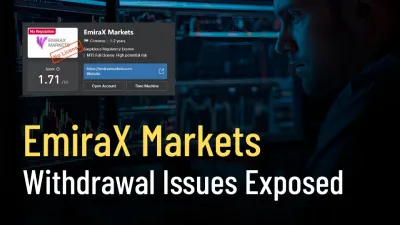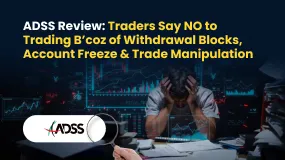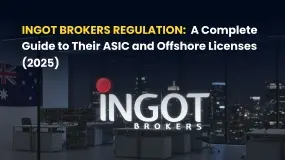简体中文
繁體中文
English
Pусский
日本語
ภาษาไทย
Tiếng Việt
Bahasa Indonesia
Español
हिन्दी
Filippiiniläinen
Français
Deutsch
Português
Türkçe
한국어
العربية
How to Calculate the Size of a Stop Loss When Trading
Abstract:There are many different factors that traders consider when making calculations in the market. We will look at one of the most common methods of avoiding losses and how to go about implementing it – How to calculate the size of a stop loss when trading.

There are many strategies used by traders to manage market risks while trading. These strategies are applied either during the trade or before the trade. It is important to have measures that protect your investments because the markets are always in constant change. There are many different factors that traders consider when making calculations in the market. The prevailing market conditions, the prospects of the trader and the size of investment are all important factors to consider when making calculations. We will look at one of the most common methods of avoiding losses and how to go about implementing it.
Using Stop Loss to Protect the Investment
Before we go into the calculations, let us focus on what the stop loss is and how it is used by traders to prevent losses. The stop loss is a tool that is used in the trading markets to mark points in the market where a trader no longer wishes to continue trading. This strategy is used extensively in the forex markets. The stop loss is a tool used by traders of all levels. In fact, it is recommended to use this tool on all trades, including currencies such as the EUR/USD, GBP/USD and USD/JPY or commodities such as gold and crude oil and indices. This is because the tool is a direct means of telling traders what they stand to lose on every single trade. To use this tool effectively, however, the right calculations must be done.
How to Place the Stop Loss Correctly
As stated earlier, the placement of the stop loss depends on the calculations that a trader has done. Timing is thus important and this timing is determined by mathematical projects. The ideal application of the tool is where a trader allows the market to move for a while before implementing the strategy. Every trader has projections about the market even before venturing into it. If you feel like the market will go up, for instance, then the placement of the stop-loss will be determined by the first few signs that you notice in the market.
The general rule is to always place the stop loss right under the entry price bar. This is a good way to ensure that the trade is actually going in the forecast direction. In case the market acts contrary to expectation, then the trader knows that the market is not ripe for the preferred strategy. An exit would thus prevent any losses. The market does not always go according to traders expectations. This is why the placement of the stop loss should not just be backed by instinct but also mathematical data.

How to Calculate the Placement
In general, the trade is measured by cents/pips/ticks or account-dollars. Each of these gives the trader a clue of what amount of investment is at risk of loss with each particular trade. The account-dollar measure is the most direct as it shows exactly how much could be lost in actual dollar value. For both of these measures, the difference between the entry and stop loss position is equal to the risk. If the entry point is at $5.00 and the stop loss is at $5.10, then the risked amount is $0.10.
While this serves to show the figure that is at risk, it does not exactly indicate the account at risk. In order to calculate the account risk, the position size must also be put into consideration. The position size is basically the number of investments made on each trade. A position size of 1,000 shares in the stock market would, for instance, result in an account risk of $.010 x 1,000, going by the initial example.
How to Control Account Risks
Having understood the placement risk and account risk, it is important to understand how you can protect your account from a risky market. As a general rule, the amount risked in a particular trade should represent less than 2 percent of what you have in your account. It is important to calculate the account risk before you do each trade because this is the only way to get any profit out of the market.
Conclusion
As stated earlier, the stop loss is a valuable tool that traders should always use when trading. This tool not only guarantees traders of proper market insights, but it also protects their investments. The market does not always go according to a traders expectations, having a form of risk management strategy is thus a smart move.

Disclaimer:
The views in this article only represent the author's personal views, and do not constitute investment advice on this platform. This platform does not guarantee the accuracy, completeness and timeliness of the information in the article, and will not be liable for any loss caused by the use of or reliance on the information in the article.
Read more

EmiraX Markets Withdrawal Issues Exposed
EmiraX Markets Review reveals unregulated status, fake license claims, and withdrawal issues. Stay safe and avoid this broker.

ADSS Review: Traders Say NO to Trading B’coz of Withdrawal Blocks, Account Freeze & Trade Issues
Does ADSS give you plenty of excuses to deny you access to withdrawals? Is your withdrawal request pending for months or years? Do you witness account freezes from the United Arab Emirates-based forex broker? Do you struggle to open and close your forex positions on the ADSS app? Does the customer support service fail to respond to your trading queries? All these issues have become a rage online. In this ADSS Broker review article, we have highlighted actual trader wordings on these issues. Keep reading!

INGOT Brokers Regulation 2025: ASIC vs Offshore License - What Traders Must Know
Explore INGOT Brokers regulation in 2025: Compare their ASIC and Seychelles FSA licenses, understand trader protection levels, and learn about potential risks in this detailed guide.

Mitrade Arabic Platform Targets MENA Gold Trading Boom
Mitrade launches its Arabic trading platform as gold hits record highs, giving MENA traders regulated CFD access to global markets and real-time insights.
WikiFX Broker
Latest News
2 Malaysians Arrested in $1 Million Gold Scam Impersonating Singapore Officials
Exness Broker Expands in South Africa with Cape Town Hub
Fraud Mastermind Zhimin Qian Sentenced to 11 Years for $6.6 Billion Bitcoin Ponzi Scheme
Is FXPesa Regulated? Real User Reviews & Regulation Check
Almahfaza Broker – 2025 Review: Safe or Scam?
Uniglobe Markets Review 2025: A Complete Guide to an Unregulated Broker
INZO Broker No Deposit Bonus: A 2025 Deep Dive into Its Offers and Risks
Global Guide to Finding Forex IBs/Brokers — Share Your Pick and Win Big!
Consob Targets Political Deepfake “Clone Sites” and Unlicensed Platforms in Latest Enforcement Round
WikiEXPO Global Expert Interviews: Gustavo Antonio Montero: ESG in Finance
Currency Calculator



